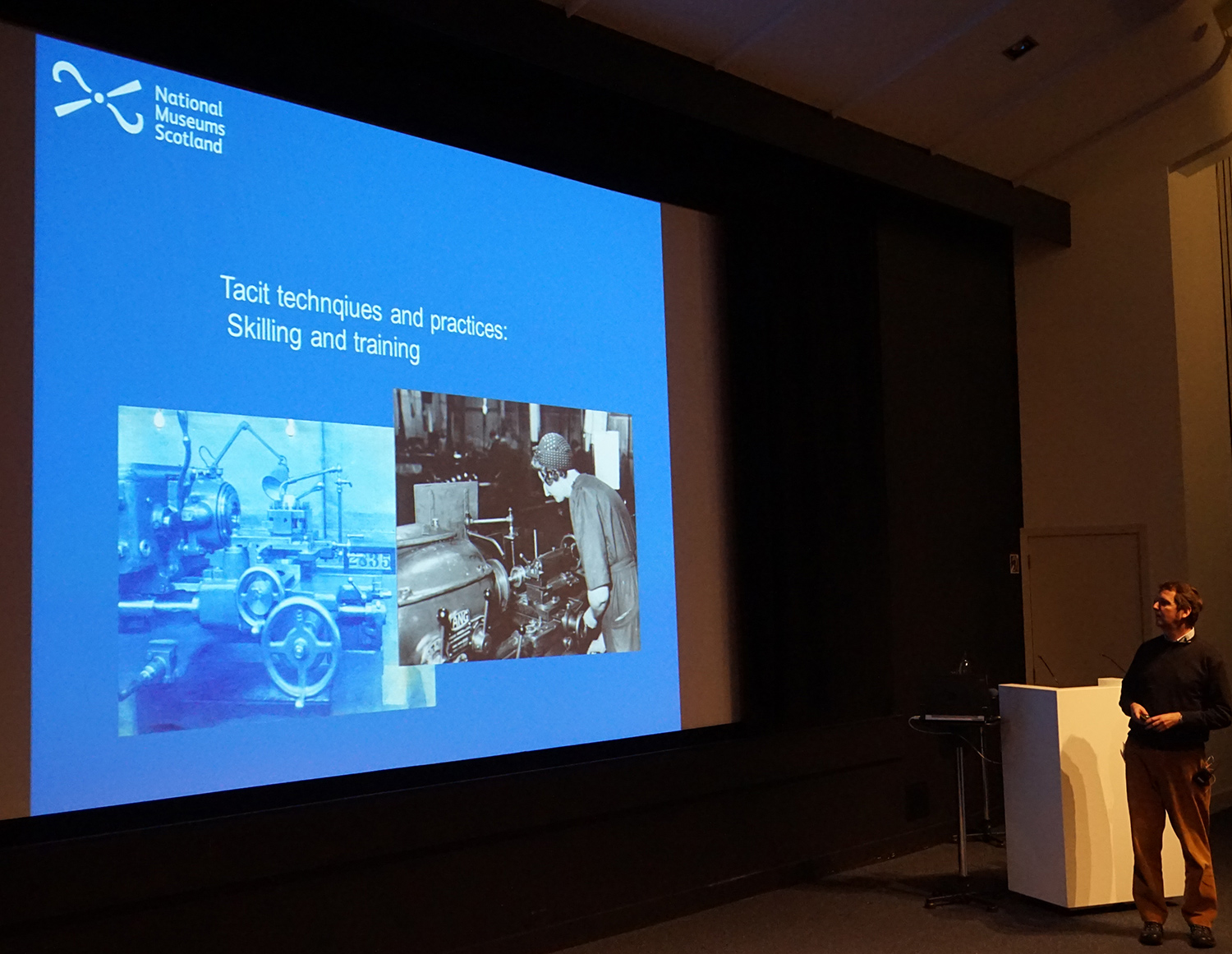The Thinking with Things lectures held at the National Museum of Scotland recently raised questions about the role of museums, suggesting that they are the home of tools that scaffold human cognition. Therefore, they are fundamental to understanding human nature, and its relation to cultures and environments.
Thinking with Things is a collaborative effort between National Museums Scotland and the History of Distributed Cognition Project at the University of Edinburgh. As part of an event hosted by National Museums Scotland, two lectures were delivered by Dr Tacye Phillipson (Senior Curator of Science) and Klaus Staubermann (Principal Curator of Technology), alongside lectures by various international scholars. There were over a hundred participants at the event and it attracted a wide range of people and ages.

These lectures highlighted new insights into the public’s perception of artefacts. A new awareness that emerged over the course of the day (for the academics, curators and audience), was the distinctions between academic and curatorial ways of approaching encounters with museum artefacts. Academics tends to focus on conceptual accounts of objects, while curators tend to prioritise the objects themselves, in terms of the experiential knowledge they offer, which is then communicated to the public through our interaction with, and sometimes recreation of artefacts, as well as the analysis of past uses.

This curatorial emphasis was brought to the fore by the project’s emphasis on the importance of embodied interactions and how objects are embedded in cultural settings.
The questions on the nature of the role of museums posed by audience members suggested a shift in understanding of the extent and significance of the roles that museums play in these kinds of hands-on enquiries, as well as in the preservation of the artefacts. Another issue evident from the audience’s questions was the ways in which the changing nature of artefacts is already transforming the curators’ role, as some industries shift to more digital forms of technology.

During the course of the day, there also emerged a shared awareness of areas of overlap between academic and curatorial interest in artefacts. These overlaps included the issues artefacts raise in relation to objectivity and subjectivity, agency and perception. For instance, the subjective nature of tacit knowledge emerged in relation to discussion of the way artefacts prompt a kinetic or kinaesthetic response, with a mental simulation of holding, wearing or interacting with an object relating partly to prior embodied experience. A shift in audience perception about this was again evident from questions posed, while the question of agency arose in relation to discussions on the ways artefacts can scaffold cognition.

The audience also raised questions that showed a change to prior assumptions about interactions with devices that may seem intuitive, such as mobile phones, but there are often forms of culturally embedded knowledge that mean such engagements are less straightforward than they initially might appear. The event was a reminder that part of the curators’ role is to ensure they communicate such tacit knowledge as far as possible, and of the importance of compensating for the gap between seeing and experiencing using museum resources. Alongside this, museums tackle the perennial issues of preservation versus access, considering there are over two million visitors to National Museums Scotland each year.

Finally, there was a lively performance with masks that highlighted the importance of the power of performative aspects of all kinds in public engagement with objects.
Contributions by Miranda Anderson, Tacye Phillipson and Klaus Staubermann.
